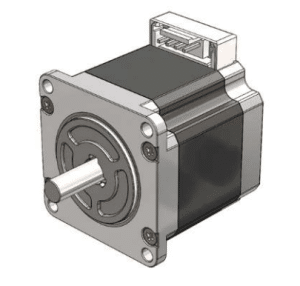Engineering Reliable Motion Systems for Fundus Imaging Devices
Fundus examination devices are precision-driven systems used to capture detailed images of the retina and optic nerve—critical for diagnosing conditions like glaucoma, retinal detachment, and diabetic retinopathy. While these devices are often associated with optics and software, motion control is just as vital in achieving the level of accuracy clinicians expect, which is why reliable motion systems for fundus imaging are essential.
For engineers developing these systems, the task isn’t just about getting from point A to B. It’s about ensuring smooth, quiet, and repeatable motion across multiple axes in a compact housing, without introducing mechanical noise or thermal drift that could impact image quality.
What Engineers Prioritize in Fundus Camera Motion Systems
In most setups, the camera or lens assembly needs to move precisely along three axes—typically front-back, up-down, and left-right. This motion is commonly driven by stepping motors, where power is transmitted via belts, pulleys, and ball screws.

Design Priorities Typically Include
- High-resolution repeatability to ensure sharp focusing and alignment.
- Smooth, low-vibration motion to maintain optical stability during scanning.
- Quiet operation, as these devices are often used in close proximity to patients.
- Compact form factor, especially as diagnostic tools continue to shrink in size.
- Low EMI, to avoid interference with sensitive sensors and imaging electronics
Achieving all of this with a cost-effective and serviceable design means engineers need motion platforms that are both high-performing and easy to integrate.
Reliable Motion Systems That Fit the Application
One approach that’s proven effective in ophthalmic and other diagnostic devices is the use of microstepping motors with flexible configuration options. Stepping Systems like SANYO DENKI’s SANMOTION F series offer a range of 2-phase, 3-phase, and 5-phase motors with flange sizes as small as 14 mm—ideal for compact designs.
These Platforms Support:
- Microstep driving for ultra-smooth motion
- Customizable motor windings to match specific torque/speed profiles
- Low vibration modes for reduced mechanical ripple
- DC and AC input drivers to accommodate a variety of system power requirements
Because medical imaging systems often operate under varied conditions, the ability to tune performance—without compromising reliability—is especially important during prototyping and field deployment.
From Design Lab to Diagnostic Room
The success of a fundus imaging system depends on more than just optics and algorithms. The mechanical motion platform must perform with precision, day after day, without drawing attention to itself. In a clinical setting, even subtle noise, drift, or motion inconsistency can compromise patient comfort—or worse, affect diagnostic accuracy.
That’s why engineers are increasingly leaning on motion systems that offer both long-term stability and fine-grain control. Whether integrating into a compact desktop unit or a fully automated diagnostic station, having motion hardware that’s modular, precise, and low-noise gives you a stronger baseline for performance—and a smoother path to final certification.
Conclusion
As ophthalmic imaging systems continue to evolve, engineers are expected to deliver quieter, smaller, and more accurate devices—often with tighter timelines and stricter regulatory constraints. Achieving that level of performance starts with a reliable motion systems for fundus imaging.
By focusing on motion platforms that offer smooth microstepping, compact form factors, and customizability, engineers can meet both design and clinical demands without overcomplicating their system. Platforms like the SANMOTION F series offer a solid reference point—combining mechanical precision and integration flexibility for fundus imaging systems that need to perform day in and day out.
Request A Consultation
Request a consultation for your customization needs. Our team will be in contact with you soon to provide further information and answer any questions you may have.


